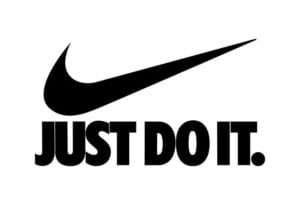The Art of Brand Storytelling: How to Craft Narratives That Resonate
In a world flooded with advertisements and promotions, it's not enough to simply showcase your product or service to attract sales.Product research,...

We are exposed to hundreds if not thousands of brand messages every day.
Brands define the functionality of a product or service, enable consumers to project images towards others, and convey anticipated experiences from product interaction. A brand may have a logo, tagline and color palette, that we may be familiar with, but the way we feel about that particular brand is directly connected to their brand positioning statement.
Brand positioning refers to the intended meaning of your brand in the mind of your target audience. This is accomplished through relating your brand’s competitive offerings to the lives of consumers.
Consider Nike. Their logo and tagline are well known globally.

However, you may not be aware of the specific positioning behind it.
For serious athletes, Nike gives confidence that provides the perfect shoe for every sport.
Channels and trends change quickly in marketing. However, a solid brand positioning statement is a fundamental constant among the world's best brands. Another great example is Harley Davidson. Harley's brand positioning statement is:
The only motorcycle manufacturer
That makes big, loud motorcycles
For macho guys (and “macho wannabes”)
Mostly in the United States
Who want to join a gang of cowboys
In an era of decreasing personal freedom.
Now consider your experience with their brand and what you imagine it to stand for, as well as the ads you've seen. The brand positioning comes through well, doesn't it?

A good positioning statement allows you to identify and occupy a certain place in the consumer's mind that is unmistakable, valued, and yours alone. Your brand position should serve as the center point for every marketing campaign.
The marketplace becomes more cluttered with each passing day. There are more channels, more competition, and more content clouding your message. To attempt to breakthrough, you must do the work to understand your audience deeply. Your specific customer personas and segmentation should directly drive your approach to the brand position. Once you understand your audience, there are two approaches to creating a brand positioning statement based on your place in the market: competition-based positioning and consumer-based positioning.
This approach is preferred when a new brand is introduced to the market because consumers attempt to relate it to brands and product categories that they are familiar with. It is human nature to organize the world in context.
This approach to positioning looks to deepen an existing relationship that consumers have with the brand by highlighting its role in their lives. In order to do this effectively, marketers need to try and uncover the abstract meanings associated with the brand, otherwise known as the brand essence.
Writing an effective brand positioning statement is a challenging task and won’t come easy. After all, the final statement must capture the meaning of the brand in a way that translates across mediums, channels, and content creators (i.e., influencers, user-generated content). The following four questions will help serve as a framework to think through your unique positioning statement:
Sign up for our monthly newsletter to receive updates.
In a world flooded with advertisements and promotions, it's not enough to simply showcase your product or service to attract sales.Product research,...

Regardless of your industry or brand, every marketer shares the same fundamental goal: to reach consumers at key moments when your marketing message...

Most organizations operate multiple brands. Sometimes this is due to a merger or acquisition, while other times it is by design within the marketing...